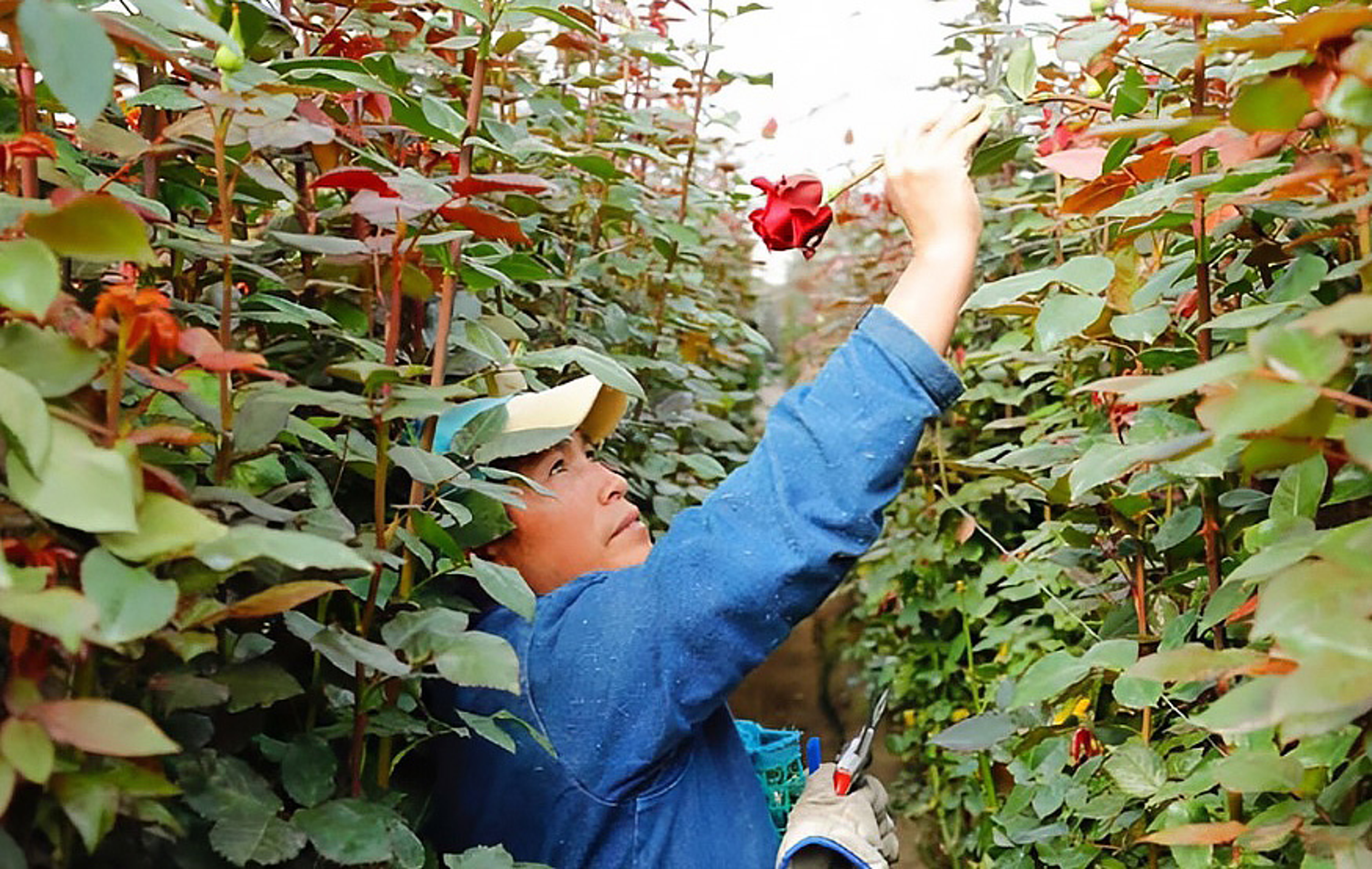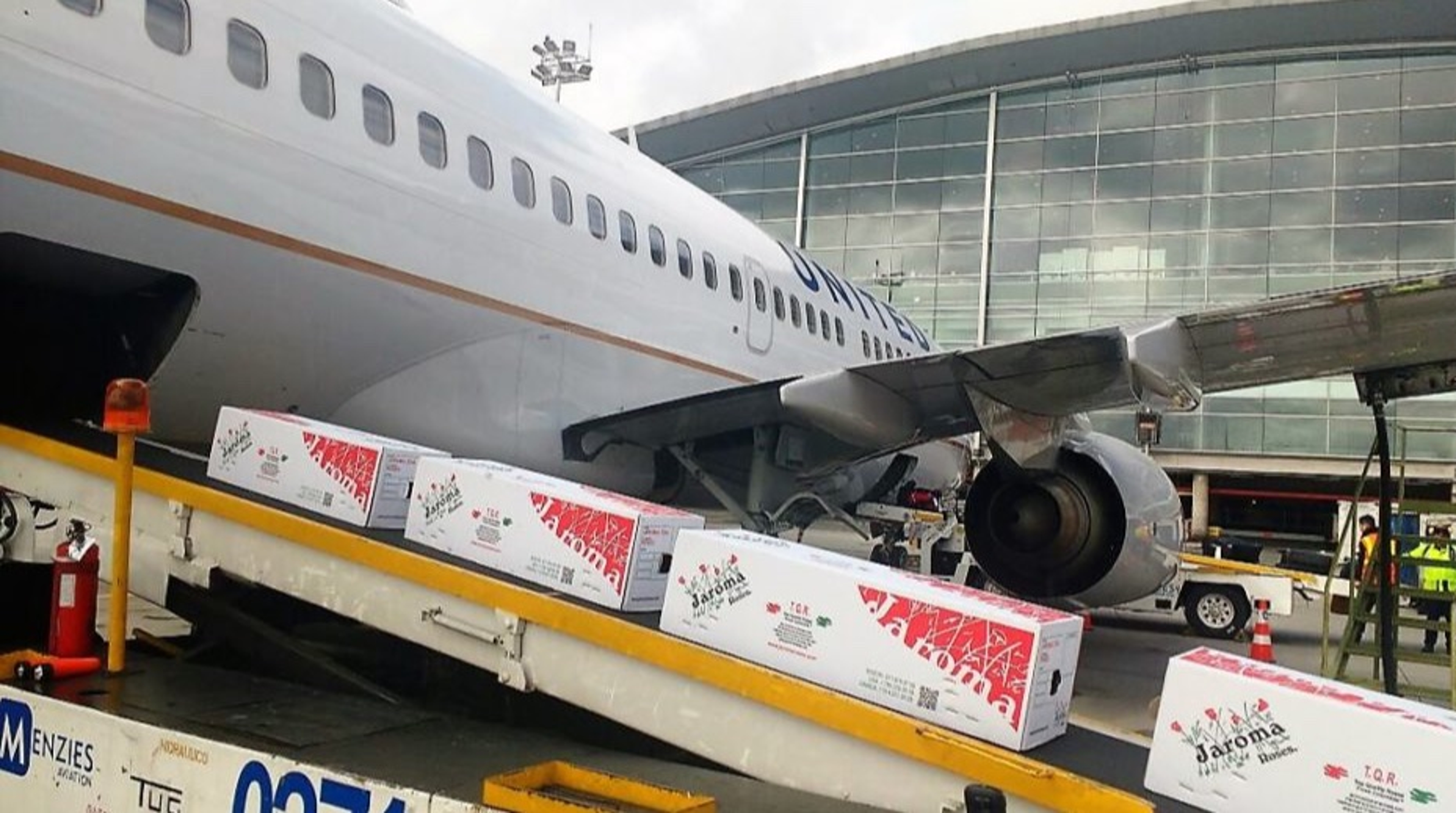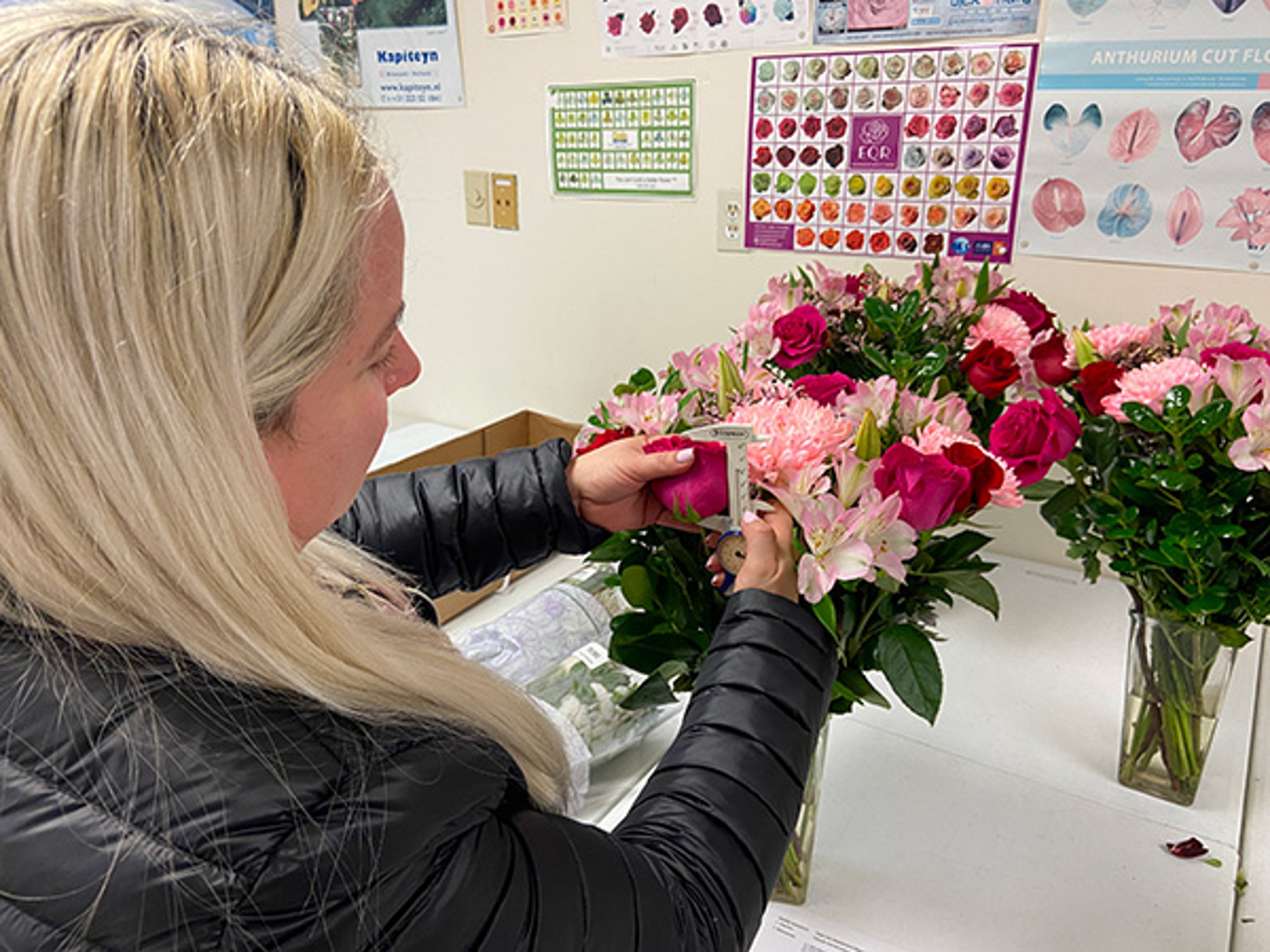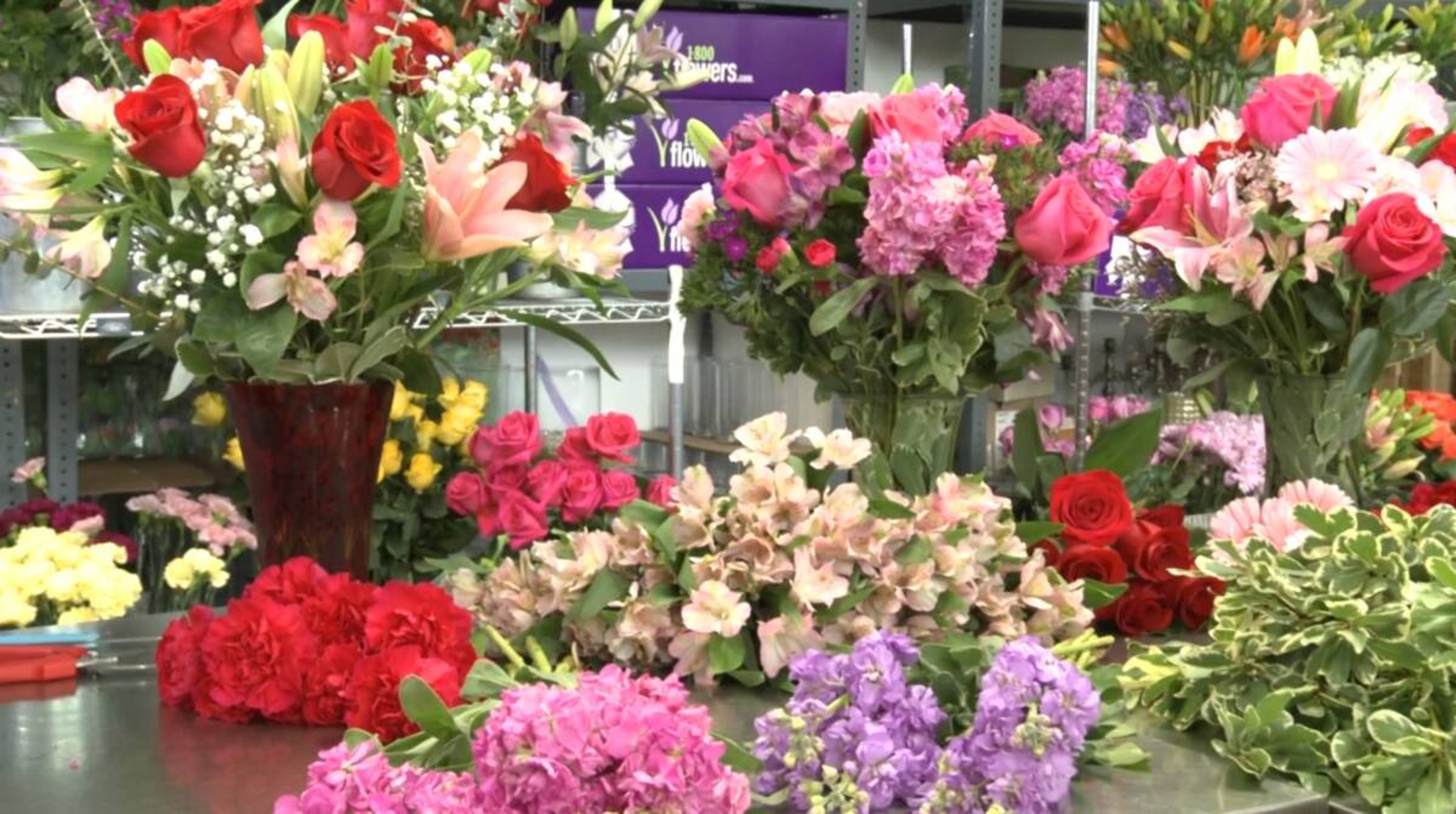From the Flower Experts: How We Pick the Perfect Roses
Our flower experts answer questions on the journey of roses from the farm to the hands of your loved ones.
Feb 03, 2023
Ever wonder where those beautiful roses you get every year for Valentine’s Day come from? Frankly, so did we.
Petal Talk went straight to two flower experts who know more than anyone about the journey a rose takes — from the farm to the hands of your loved ones: Kevin Cochran, vice president of procurement at 1-800-Flowers.com, and Katya Chaparro, director of quality assurance at 1-800-Flowers.com.
Here are some highlights from our conversation. (Some portions have been edited for clarity and brevity.)
How are our roses harvested on the farm?

Kevin Cochran: On an average day of production, the farm workers in Colombia get out to the farms at first light, 5 or 6 a.m., and start cutting. They're really experts. The crew makes sure the leaves are healthy, and then they make the cut, put them in a basket, take them to post-harvest immediately. There, they bring them down to temperature and get them hydrated. That's the best thing they can do.
Only the premium, best-quality [roses] in terms of freshness and spec get put into the bouquet operation. The bouquet operation is where we have people at the farm level for when those stems come in and get hydrated. They get brought down to a temperature that ensures a lengthy vase life. Typically, that’s 34-35 degrees. The cold chain is the most important thing to ensure the quality of stems throughout the journey.
After they’re hydrated, they’re packed in a multi-pack box, palletized, and stacked.
Where do the roses go once they leave the farm?

Kevin: They're sent to the Bogota airport, typically around 6 or 7 o'clock at night of the same night they were harvested. There, they're processed, and the planes take off about 10, 11 p.m. They fly overnight and land in Miami at about 4 or 5 a.m. Then, they go through U.S. Customs.
From the airplane to the cooler, there's about a 50-yard stretch that's super important because Miami's warm. It’s not as bad around Valentine’s Day, but most days the heat is more severe. It's really important that those roses get into the cooler very quickly. When you heat up densely packed flowers, their metabolic clocks start ticking. It's kind of like an engine revving — you have to slow it down, and you have to do it very carefully and quickly; if you don't, you start getting respiration and dehydration. Respiration means condensation, which means botrytis (a plant fungus), mildew, and things like that. It's all about the temperature.
So, the first thing we do after the flowers go through customs is pre-cool them. We get the temperature back down to about 34 degrees and then store them. Literally, we're talking a day or two from when they’re cut from the rose plant at the farm (to this stage).
Typically, we hold them for a day (in Miami), and then we’ll ship them to our fulfillment centers over the next day. Then, as soon as they get there, they start going out the door.
We’re talking about a really short window to get from Point A to Point B.

Tell us about your quality-control procedures.
Kevin: Katya is very focused on the key parameters that really make the difference in quality. No. 1, you have to start off with the right specs, freshness, and varieties.

Katya has a stringent process whereby she tests rose varieties. Anything new that we want to bring on, she tests it in a laboratory in Miami to make sure it passes our strict protocols as far as shelf life/vase life and can go through our supply chain.
Katya Chaparro: We ask the farm to assign a group of people who are familiar with our specifications. And we have an inspector who comes in to visit the farms. We provide very detailed specifications: the varieties they can use, bouquet length, bouquet construction, and all the recipes.
Our differentiator is the details. It’s our standard operating procedures and the specifications that we provide to the farms. We follow up every single day in Miami, in Bogota, and in every other place of inspection. And consistent quality is the result.
What happens if you encounter a shipment that is not up to your standards?
Kevin: Letting something get through (that is below our standards) is going to tarnish our reputation, and the next time the farms will know they can get away with it. We have to maintain a tight line. That’s why Katya is in procurement. She’s really the authority when it comes to what passes and what goes. The buck stops with Katya.
Katya: Every month, the distribution centers or fulfillers receive a document prepared by us so that when they receive the flowers, they know what to check as they inspect. It includes the recipe, bouquet length, bouquet construction, and whether it needs to be hydrated. During the holidays, the document also includes pre-approved substitutions developed by our vendor relations, product development, and QA teams.
What’s the difference between quality control at 1-800-Flowers.com and a grocery store?
Kevin: I came from a brick-and-mortar store, and we would ship flowers in and put them on display. Then the customer grabs the flowers and goes to the cash register point of sale to buy. It’s the same bouquet they picked up from the display.
In our business, the point of sale is on the website. The customer sees an image of a bouquet and then we have to replicate it all the way through the supply chain to wow the customer with the exceptional quality at the delivery. We can't leave anything to chance. We have to be very specific about anything that can impact quality.

How are you able to meet demand in the lead-up to Valentine’s Day?
Kevin: The harvest is a bell curve. It ramps up, peaks, and comes down.
At the farms we're working with, the peak of the bell curve (for Valentine’s Day) is the first or second of February. So, you're looking at about seven days prior to that and seven days after that for that bell curve to take place. All the volume for the industry ships within those days.
We come in at the top of the curve, which is when the most production is. We do that because if you get too much in the front, you'll start getting aged flowers.
We get the bulk of our supply on the back side of the curve, and then we capitalize on it. We want the freshness.
We're getting the freshest pick within the bulk of the production. We’re getting the first pick of the best quality, and we do that by getting orders in very early and coming to the table with a culture that demands quality.
How important are relationships in the flower business?
Kevin: Our company’s mission is to help people build more meaningful relationships. The supply chain is the same thing. The supply chain for floral is a small circle of farmers compared with something like the auto industry. It’s all about managing relationships.
Jim and Chris [McCann] do a great job of making sure our relationships are long term. You look at how long Jim and Chris have known Herbert Jordan at The Queen’s Flowers – 30 or 35 years. I’ve worked with him since 1993. Katya has a similar tenure.
These relationships are real long term. You walk into a building, and people know you by what you've done over the past 30 years. And the big thing about us is that quality presence. They know that we're going to be talking quality before we talk cost. When things get tough, when things get hard, it falls back on the reputations of the people who are buying and the companies they are buying for. The reality is relationships and reputation mean a lot in this industry.







